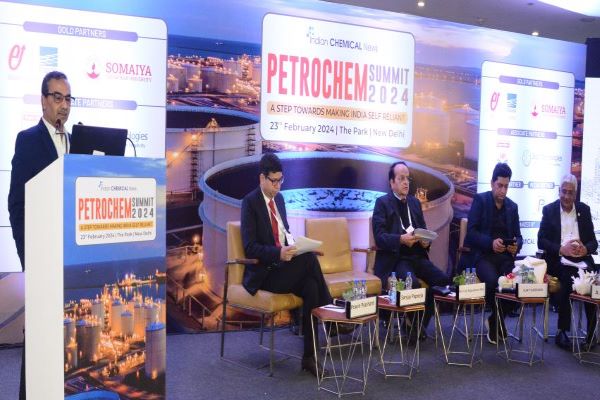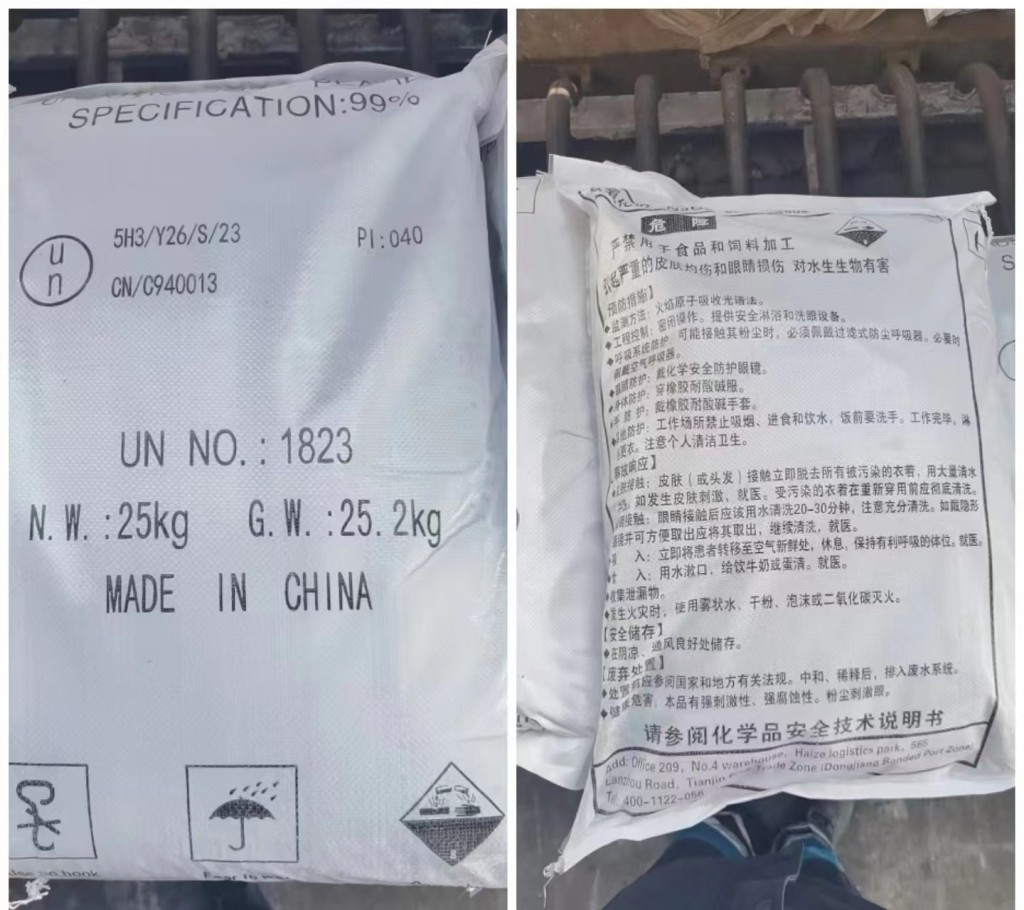PetroChem Summit 2024: Policy overhaul key to spark industry 4.0 transformation

As India charts its course towards becoming a global petrochemical powerhouse, the efficacy of its policy framework will play a pivotal role in shaping the industry’s trajectory. By prioritizing investment, sustainability, digitalization, talent development, and regulatory clarity, India can unleash the full potential of its petrochemical sector, driving economic growth, fostering innovation, and securing a sustainable future for generations to come.
The leading experts discussed the latest scenario at the inaugural session, ‘Conducive Policy Framework, PCPIR, & SEZ and Way Forward’ of PetroChem Summit 2024 organized by the Indian Chemical News in New Delhi on February 23, 2024 in New Delhi. The session was moderated by Pravin Prashant, Executive Editor, Indian Chemical News.
Sharing the market overview, Pravin Prashant said: “The Indian Petrochemicals industry is expected to reach US $100 billion by 2025, with a CAGR of 10% from 2020 to 2025. The growth in demand is driven by various factors such as the increasing population, growing middle class, and rapid urbanization. India is expected to account for 20% of the global petrochemicals capacity additions and almost 33% of Asian capacity. In India PCPIRs and SEZs are offering facilities for players and the new PCPIR policy has played a key role in setting up of the clusters in strategic locations. Over the next decade, the global petrochemicals market will see some major shifts, and India is poised to play a major role in that change. There are many capex projects planned by ONGC, HPCL, BPCL and IOCL. However, the bigger capex investments remain a challenge.”
Despite its set of challenges, the Indian petrochemical industry has displayed a great growth potential, said Sanjay Papneja, CGM-Petrochemical Projects, Indian Oil Corporation Limited.
“The size of the global chemical industry is pegged at around US $4.7 trillion. Comparatively, the size of the Indian chemical industry will touch around US $295 billion by 2027 and approximately US$1 trillion by 2040. Petrochemical intermediates are the principal feedstock to produce specialized chemicals, which are required for the production of practically all consumer and technological products. Polymer intermediates such as ethylene oxide, propylene oxide, polyols, phenol, styrene, and rubber derivatives are utilized in the production of a wide range of consumer goods,” informed Papneja.
“India has limited capacity of Poly Vinyl Chloride (PVC) and the visibility of projects is only up to 2030. While the PSU refining capacity is 254 MMTPA, it is expected to reach 310 MMTPA by 2030. Even after considering the announced petchem capacity till 2030, there would a shortfall of 16 MMTPA petchem capacity. India witnessed import of petrochemical products worth Rs. 1,53,000 crore. The exports stood at Rs. 3,000 crore, mainly consisting of aromatic components. The key challenge is non-availability of feedstock which could be mitigated through careful selection of right mx of feedstock including a suitable blend of bio-feedstocks,” Papneja added.
Aay Sardana, President & Head, Strategy & Business Development- Polyester, Reliance Industries Limited feels that petrochemicals market in India is set to grow owing to the future demand on the back of young population and growth in GDP. “Both the growing population and rising GDP are linked and will contribute to the growth of this sector as petrochemicals play a huge role in our everyday lives. The push to indigenous production during Covid-19 pandemic has already brought a paradigm shift and no doubt the petrochemical industry will be a shining star in the days to come. Currently there is a Rs. 9 lakh crore investment and the investment worth US$ 10 billion is expected in the coming days.”
“From my interactions with the stakeholders, there is a feeling within the government that this sector needs to be supported with infra and investment. I don’t think there is a need to feel disappointed despite the challenges such as lack of feedstock availability. Petrochemical industry must display an optimistic approach and avoid any negativity. The focus on recycling and sustainability is a great way forward for us,” Sardana added further.
Painting a realistic picture, AN Sreeram, Executive Director, BPREP, Bharat Petroleum Corporation Limited said, “Despite the rising demand, India has lowest domestic consumption of petrochemicals in the world which is 0.3x of the world average.”
“There is a shift in the global supply chain and amid evolving geopolitical situations, ether is going to become costlier. In the USA, there is large capacity building going on and in the EU, the petrochemicals are stagnant and there are a few projects. China is the largest political hub due to self-sufficiency and in Asia and the Middle east, the growth prospects are huge,” said Sreeram.
“In India, the feedstock availability continues to be a challenge along with the labour and utility costs, capital cost, and policy environment. The ease of doing business and land acquisition, environment clearances too are a hindrance. In terms of ecosystem, cluster formation is one of the prime components for creation of regional competence. What is required is an anchor company, efficient logistic network, right mix of policies, regulations and incubation. Dahej PCPIR is an example of a strategic location with easy access to India’s hinterland. It has a large number of ports around 1600 km coastline. Similarly, the focus areas of creation of conducive environment, technology and talent availability, land availability and environment clearances, equitable input duty structure. We must facilitate multiple clusters, establishment of technical infrastructure, location with plug and play model and appropriate regulatory framework,” Sreeram added.
Prof. VN Rajasekharan Pillai, Vice Chancellor, Somaiya Vidyavihar University, said, “All the major industries are dependent on petrochemicals and, therefore, these play an important role in everyday lives. Therefore, we must work on a continuous innovation model and training of resources. The existing gaps in the R&D can be filled only through appropriate training of human resources. The lack of training is a major hindrance. It is good that the government has allocated Rs. 50,000 crore for R&D in the private sector. Going forward, the public private partnership is the only way forward.”
“The share of R&D in government spending is a meagre 0.3% and thus needs to be enhanced. Product innovation and sustainable development remain at the top. The collaboration between the industry, government and academia needs to be strengthened. Despite a large manpower, India lacks proper R&D infrastructure. In western countries, students get close to 40% credits through their internship with the industry and at the same time, faculty too works with the industry for a certain period of time to gain real time experience. We must replicate such a model here in India. To drive the future, we need continuous innovation and R&D of materials, technology development, recycling technologies, circular economy, bio-nano compounds and PPP in R&D. We must embrace 4.0, enhance the existing technologies with focus on sustainability and safety,” added Prof. Pillai.
The PetroChem Summit 2024 themed, ‘A step towards making India self-reliant’, witnessed attendance by leading industry experts and stakeholders from the petrochemical chemical sector across India.
Gold partners of the summit were Ebara Elliot Energy, and Somaiya Vidyavihar University. Associate partners were Hindustan Petroleum and Jaaji Technologies.
Register Now to Attend NextGen Chemicals & Petrochemicals Summit 2024, 11-12 July 2024, Mumbai
Recommended Suppliers
 June 3, 2024
June 3, 2024  June 3, 2024
June 3, 2024  June 17, 2024
June 17, 2024  June 18, 2024
June 18, 2024  June 18, 2024
June 18, 2024 














